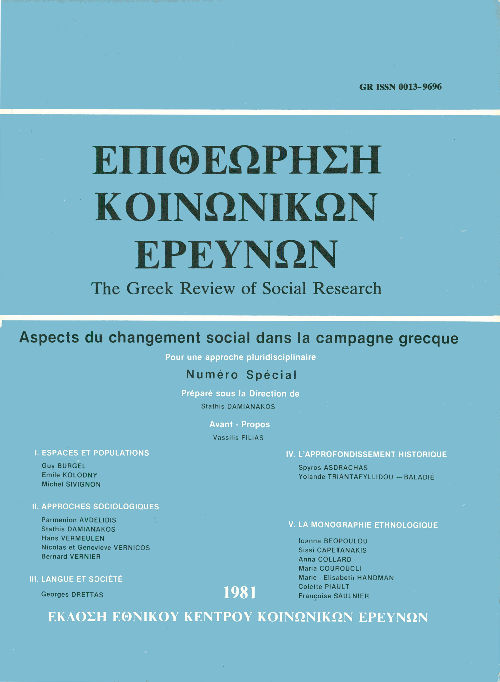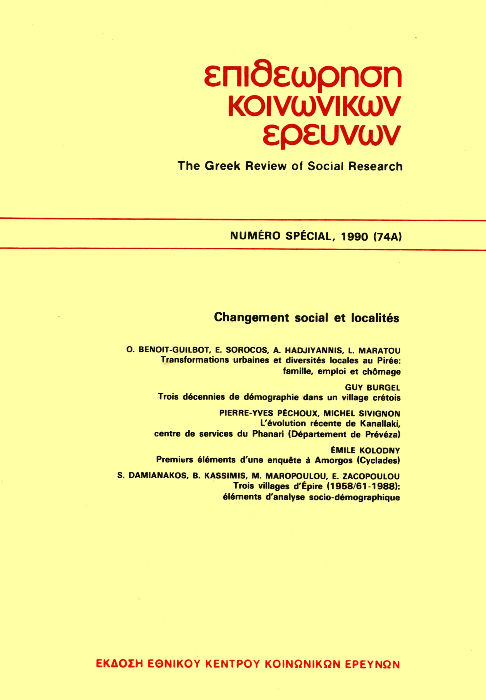Peuplement et évolution démographique du bassin de Lassithi
Abstract
Le poljé du Lassithi, exemple unique d’un vaste bassin karstique
d’habitat permanent parmi les îles de la Méditerranée,
constitue une exception dans le cadre de la Grèce insulaire
par son altitude (800 m) et la densité de son peuplement (200
habitants par km2 de terre cultivable). Occupé par l’homme
depuis la préhistoire, le bassin fut l’objet d’une recolonisation
systématique par les Vénitiens en 1463,deux siècles après
que le poljé eût été abandonné complètement. Type d’isolat
en montagne, sujet à de multiples mutations souvent brutales,
la population du Lassithi atteint son maximum démographique
vers 1940. Le désenclavement récent du bassin
s’allie à un mouvement migratoire massif vers les villes de la
Crète, et en particulier vers Aghios Nikolaos et surtout Iraklion.
Article Details
- How to Cite
-
Kolodny, E. (1969). Peuplement et évolution démographique du bassin de Lassithi. The Greek Review of Social Research, 1, 51–63. https://doi.org/10.12681/grsr.523
- Issue
- 1969: 1
- Section
- Articles

This work is licensed under a Creative Commons Attribution-NonCommercial 4.0 International License.
Authors who publish with this journal agree to the following terms:
- Authors retain copyright and grant the journal right of first publication with the work simultaneously licensed under a Creative Commons Attribution Non-Commercial License that allows others to share the work with an acknowledgement of the work's authorship and initial publication in this journal.
- Authors are able to enter into separate, additional contractual arrangements for the non-exclusive distribution of the journal's published version of the work (e.g. post it to an institutional repository or publish it in a book), with an acknowledgement of its initial publication in this journal.
- Authors are permitted and encouraged to post their work online (preferably in institutional repositories or on their website) prior to and during the submission process, as it can lead to productive exchanges, as well as earlier and greater citation of published work (See The Effect of Open Access).





